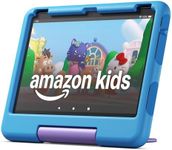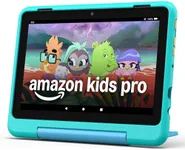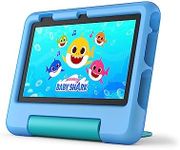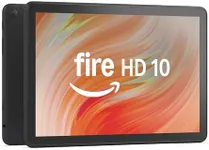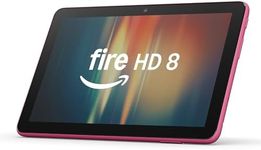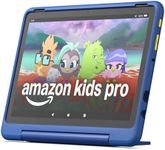Buying Guide for the Best Amazon Fire Tablets
When choosing an Amazon Fire tablet, it's important to consider how you plan to use the device. Whether it's for reading, streaming, gaming, or productivity, understanding the key specifications will help you find the best fit for your needs. Here are some important specs to consider and how they can impact your experience.Screen SizeScreen size refers to the diagonal measurement of the tablet's display. This spec is important because it affects how portable the device is and how comfortable it is to use for different activities. Smaller screens (7-8 inches) are more portable and easier to hold for long periods, making them ideal for reading and casual browsing. Medium screens (8-10 inches) offer a balance between portability and viewing comfort, suitable for streaming and light productivity. Larger screens (10 inches and above) provide a more immersive experience for watching videos and playing games, but they are less portable. Choose a screen size based on your primary use and how often you plan to carry the tablet around.
ResolutionResolution refers to the number of pixels on the screen, which determines the clarity and sharpness of the display. Higher resolution means better image quality, which is important for watching videos, playing games, and reading text. Common resolutions include HD (1280x800), Full HD (1920x1080), and higher. HD is sufficient for basic tasks and casual use, while Full HD and higher resolutions are better for media consumption and detailed work. Consider your visual preferences and the type of content you will be viewing when choosing the resolution.
Storage CapacityStorage capacity indicates how much space is available for apps, games, photos, videos, and other files. This spec is important because it affects how much content you can store on your tablet. Common storage options include 16GB, 32GB, 64GB, and higher. If you plan to use the tablet for basic tasks and streaming, lower storage options may suffice. For users who download a lot of apps, games, or media, higher storage capacities are recommended. Additionally, some tablets offer expandable storage via microSD cards, which can be a flexible option.
Battery LifeBattery life refers to how long the tablet can operate on a single charge. This spec is crucial for users who plan to use the tablet on the go or for extended periods without access to a charger. Battery life is typically measured in hours and can range from 7 to 12 hours or more. Longer battery life is beneficial for travel, long reading sessions, and uninterrupted media consumption. Consider your usage patterns and how often you will be away from a power source when evaluating battery life.
ProcessorThe processor is the brain of the tablet, determining how fast and efficiently it can run apps and perform tasks. This spec is important for overall performance, especially for gaming, multitasking, and running demanding applications. Processors are often described by their number of cores and clock speed (GHz). Basic tasks can be handled by entry-level processors, while more intensive activities like gaming and multitasking benefit from mid-range to high-end processors. Consider what you will be using the tablet for and choose a processor that matches your performance needs.
RAMRAM (Random Access Memory) affects how smoothly the tablet can run multiple apps and handle multitasking. This spec is important for overall responsiveness and performance. Common RAM options include 2GB, 3GB, 4GB, and higher. For basic tasks like browsing and reading, lower RAM options may be sufficient. For more demanding activities like gaming, streaming, and multitasking, higher RAM options are recommended. Consider how many apps you typically use at once and choose a RAM capacity that ensures smooth performance.
Camera QualityCamera quality refers to the resolution and features of the tablet's front and rear cameras. This spec is important for users who plan to take photos, record videos, or use video calling. Camera quality is measured in megapixels (MP) and can include additional features like autofocus and HDR. Basic cameras (2-5MP) are suitable for casual use and video calls, while higher quality cameras (8MP and above) are better for photography and video recording. Consider how often you will use the camera and for what purposes when evaluating camera quality.

